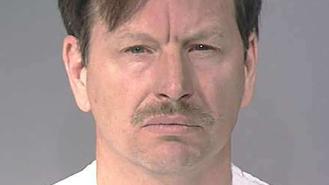
What makes a murderer?
A lot is talked about killers. Especially around these parts. In the world of true crime, it’s easy to get bogged down in the grisly details; in the whats, the whos and the hows. It’s important, however, that we step back from time to time to survey our surroundings and not forget the bigger picture.
We may all read and watch documentaries about murder. We might all talk and think about serial killers after listening to true crime podcasts. But let’s not forget that murder is not normal. And it’s really not okay. Taking another person’s life is about as abhorrent an act as it’s possible for a human being to carry out. Let’s never lose sight of that.
Just what is it that drives people to commit such a taboo-smashingly disgusting act? We’re not talking about motivations like lust, anger, ‘the thrill’, financial gain or anything like that. We’re talking deeper impulses. What causes people to kill again and again…?
What makes a murderer? Here are the main deep-rooted sources:
Childhood abuse/early Trauma
Abuse, be it physical, sexual, emotional or any other kind, is often cyclical. Oftentimes an abuser will have been beaten, molested or chastised as a child themselves. Of course, it’s possible - common, almost - for abused people to grow to despise such behaviour and vow never to repeat it. It’s also very possible to keep pedalling that cycle of abuse.
In his seminal book ‘Serial Killers’, writer Joel Norris explains it by saying: 'Parents who abuse their children, physically as well as psychologically, instill in them an almost instinctive reliance upon violence as a first resort to any challenge.'
Research from Radford University shows that multiple murderers have extremely high instances of early abuse:
● Psychological abuse - 50%
● Physical abuse - 36%
● Sexual abuse - 26%
● General neglect - 18%
Of course, trauma in infancy doesn’t cause murderous behaviour in the populace with any regularity whatsoever. But in extreme examples, there’s often abuse in the background of compulsively violent criminals and murderers.
Famous example: Henry Lee Lucas
Genetic predisposition/psychopathy
Discussions around any form of human behaviour often turn to the classic ‘nature vs. nurture’ debate. It’s assumed that most or even all behavioural traits are learned, but the science doesn’t back that up. A lot is, but a surprisingly amount of the things any of us think and do are informed by our genetics.
Psychopaths are made, but they’re also born. Some people just have antisocial personality disorder hardwired into their DNA. Serial killers often have abnormally high levels of testosterone as well, something which can cause violent outbursts.
Studies also show that people with a gene known as MAOA - or ‘The Warrior Gene’ - are born with a propensity for violence. This may explain infamous killers who seemingly have no tangible ‘trigger’ moment or explanation or excuse for their crimes. With this people, it could simply be a matter of brain chemistry and genetics.
Famous example: Dennis Rader
Head injury/brain damage
A notably high proportion of some of modern history’s most notorious killers and violent criminals - especially serial killers - suffered brain damage due to head injury at some point in their lives. One recent study conducted by the University of Glasgow indicated that the number could be anywhere up to 30%. That’s high.
Again, it’s important to note that the research doesn’t suggest that people who have suffered brain injuries are likely to become murderously violent. It merely indicates that such injuries can spark violent behaviour in those predisposed to it. It can be a trigger for them, almost.
Famous example: Ed Gein
Drug/alcohol abuse
Severe drug addicts can turn to violent crime in order to illegally make the money they need to feed their habit. That’s a well-known fact. As such, the link between addiction and violence is clear. What’s slightly less clear is the connection between compulsive killers and alcoholism and/or drug abuse.
Many infamous repeat murderers suffered with addiction issues during their crime spans. Did the booze and the Class As actually cause them to kill? Perhaps, but only because they were high risk individuals in the first place.
Why does serial killing and drug and alcohol misuse so often go hand in hand? Well, it seems as if murder can become addictive in and of itself. Continual, repetitive, reckless and compulsive behaviour is seen in not only alcoholics and those addicted to narcotics, but also with serial killers.
Famous example: Jeffrey Dahmer
Extreme paraphilia/perversion
Sexual fetishes are, of course, not uncommon among us humans. Most of us have romantic preferences and peccadilloes to some extent, albeit the vast majority of people are into quite vanilla stuff. Plenty of folk are aroused by more fringe ideas, people, objects and concepts but - provided no one is harmed in the enjoyment of them - it’s generally not a negative thing.
As with anything, however, these fetishes (or ‘paraphilia’) can sometimes veer towards the extreme. When violence is involved and the desire turns to obsession, it can get very dicey indeed. Left unchecked and able to degrade into what psychologists call a ‘paraphilic disorder’, sadistic fetishes may escalate in the mind of a would-be killer. Fantasies can turn dark and, in rare cases, lead to acts where people’s hidden desires lead them to kill.
Famous example: Jerry Brudos
A combination of factors
It seems as if any number of the factors we’ve just explored may just be enough to trigger murderous ways in some people. If that is the case though, surely the world would be full of cold-blooded killers? After all, head trauma, childhood abuse, sexual deviancy, substance abuse… it’s all pretty rife in the world.
The truth is more likely that a serial/spree killer or mass murderer would need a number of these things going on at any one time. They would need to be born with a genetic predisposition towards violence and also be abused or hit their head. Someone with an extreme paraphilia would also have to develop a drug addiction, as well as be drawn to cruelty.
Our conclusion? It takes a certain recipe to make a murderer. More than one ingredient is needed and the kitchen needs to be just so. When those things align, something truly evil is cooked up.









